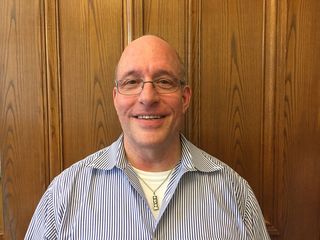Bias
Hidden Bias and Racism
A social worker shares his struggle with unconscious attitudes.
Posted June 15, 2017

By Stephen Friedman, LCSW
As a social worker psychotherapist working for many years in a school for learning disabled students, I’ve had to confront hidden biases in myself, especially in my work with African American teenagers.
Hidden bias is everywhere
Though I identify as a liberal person, I’ve realized I’m not immune to holding racially biased attitudes and beliefs. Consciously, I am opposed to the racist notions that people of color are inherently inferior or possess unfavorable qualities, like a propensity towards aggression or criminal behavior, or a tendency to be overly sexualized. And yet, unexpectedly and disturbingly, I’ve found racist stereotypes hidden within myself.
If a male student of color in therapy with me is struggling with academic performance, how do I process this information? Many of the students I counsel have been dismissed from prior schools that have characterized them as “lazy,” “unmotivated” or “up to no good.” And one of the worst declarations: “you’ll never amount to anything.” These negative messages damage student self esteem, ambition and hope.
But the harder part for me to face as a white liberal social work therapist is that I have taken in—internalized—some of these messages without even knowing it. I have fallen prey to the barrage of negative media images about teenagers of color.
I have come to understand that in American society, the racism in our history has an impact on everyone’s attitudes and beliefs, both conscious and unconscious. Hidden bias is everywhere--it is impossible to avoid having racist beliefs or attitudes. But we are obliged to look inward and examine our views as best we are able.
How my work has helped me discover my hidden bias
During a therapy session with an African American 18-year-old male high school student, who I will refer to as A, he informed me of a recent occurrence: although he had a subway pass, he jumped the turnstile at a subway stop near his home. I had had a therapeutic relationship with A for over 2 years and, after some exploration, came to understand A’s behavior as a reflection of an inner struggle between his intent to create a productive, successful future, and an internalized belief he would become the petty criminal society expected him to be.
I asked A about his decision to jump the turnstile even though he had a subway pass. He shrugged his shoulders and smiled, saying he acted on impulse and enjoyed the thrill of his forbidden action. I referred to the plans for his future we had been discussing, about his school and career goals. A expressed being committed to pursue his dream of being the first in his family to attend college. There was a glimmer of an awareness of the conflict between this dream and his impulsive illegal act, a conflict that centered around his image of himself and his future.
On reflection, I recognized a parallel struggle within myself: I felt hopeful and positive regard for A and his future, but also noted my own internalized bias in which his illegal behavior comported with a view of him as a “criminal” young man of color. Recognizing the hidden bias within myself allowed me to step back and better appreciate how racism had influenced A’s sense of self and caused a tension within him--he is an aspiring hopeful young person of color struggling against internalized social expectations that he is a criminal.
Racism had influenced his sense of self, as well as the way in which others perceive him. Including me. In spite of my best intentions, I harbored hidden stereotypical expectations of A outside my awareness. Gaining awareness helped me avoid the trap of viewing A’s criminal transgression as expectable or as part of his “true” self. Instead, I was able to appreciate the emotional complexity of A’s inner struggle. This enabled both of us to gain a greater understanding of his experience, as well as bolster our feeling of hope for his possibilities.
Ongoing reflection and curiosity increase understanding
As a school social worker, I have learned to refrain using my authority and position of power to avoid reflecting on my hidden bias. An important strategy I have used, which sounds simple, is to listen to my students and learn from their experience.
I often ask my students of color what it is like for them in school and out in the world. I am actively curious about their experience. Many of my students of color have told me about being profiled on their way home from school, often required by police to open their school bags for random search. These students talk about having to avert their eyes on the street when they pass police officers lest they be viewed as antagonistic or potentially aggressive.
In this way, I have gained invaluable insight into my students’ experiences and the racist attitudes and behaviors they encounter daily. We talk about the inequity of our experiences: how, as a white man, I have the privilege of not having to face these indignities with unremitting regularity. That I have the privilege of not being required to think of myself as having a race. I can go out into the world without fear with regard to the color of my skin.
By being open to learning from my students of color, and reflecting on the hidden biases within myself, I’ve been able to enjoy getting to know my students on a deeper, more intimate, level. I believe this approach can be useful for all people; we can all benefit from examining our bias. We should not avoid the issue of race and racism—we should be curious and candid, with ourselves and with others.
Stephen Friedman, LCSW, has been a clinical social worker for 30 years. He was a Chief Social Worker in the adult mental health outpatient department at Jacobi Hospital in the 1990’s. He has worked as a school counselor at Winston Preparatory School for the past 17 years. Currently he is a doctoral student in clinical social work at Smith College School for Social Work and is interested in writing his dissertation on hidden bias in interracial therapy relationships. He is currently a Doctoral Intern at the William Alanson White Institute. He also has a small private practice in New York City working with adults, and adolescents.




